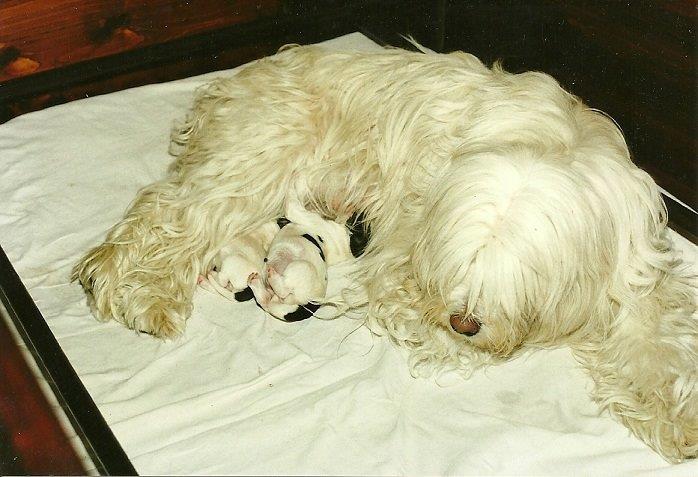How
to Give Canine CPR
by Lori S. Mohr (First Aid For Dogs - Tim Hawcroft)
CPR (cardiopulmonary resuscitation) is the process of breathing life back
into an unconscious human. A similar technique can also work effectively
on dogs.
The signs that indicate the need for CPR include unconsciousness, lack of
arousal, lack of physical movement, or eye blinking. These symptoms can
occur
from drowning, choking, electrical shock, or a number of other situations.
The key to canine CPR is remembering the ABCs:
Airway,
Breathing, and
Cardiac compression.
To perform the three techniques, follow these steps:
1) Lay the dog on a flat surface on its right side and extend the head
back
to create an airway.
2) Open the jaws to check for obstructions, and if any exist and are not
easily removed, do one of two things, depending on the size of the dog.
a) For small dogs, hold them upside down by their back end and shake
vigorously to try removing the obstruction.
b) For large dogs, lay them on their side and, if necessary, use
long-nosed
pliers to remove the obstruction.
3) Cup your hands around the muzzle of the dog's mouth so that only the
nostrils are clear. Blow air into the nostrils with five or six quick
breaths,
again, depending on the size of the dog.
Small dogs and puppies and require short and shallow breaths.
Larger dogs need longer and deeper breaths.
Continue the quick breaths at a rate of one breath every three seconds or
20
breaths per minute.
Check for a heartbeat by using your finger on the inside of the thigh,
just
above the knee. If you don't feel a pulse, put your hand over the dog's
chest
cavity where the elbow touches the middle of the chest. If you still don't
find
a pulse, have one person continue breathing into the nostrils (mouth to
snout), while another gives cardiac massage.
Give the dog a cardiac massage by placing both hands palms down between
the
third and sixth rib on the chest cavity.
For large dogs, place your hands on top of each other.
For small dogs or puppies, place one hand or thumb on the chest.
Use the heel of your hand(s) to push down for 10 quick compressions and
then
check to see if consciousness has been restored. If consciousness has not
been
restored, continue the compressions in cycles of about 10 every six
seconds
for 10 cycles a minute.
After each cycle of compression, the other person should give the dog two
breaths of air in the nostrils. If only one person is present, this
procedure can
still be done successfully.
Once the dog has started breathing, contact a veterinarian immediately.

